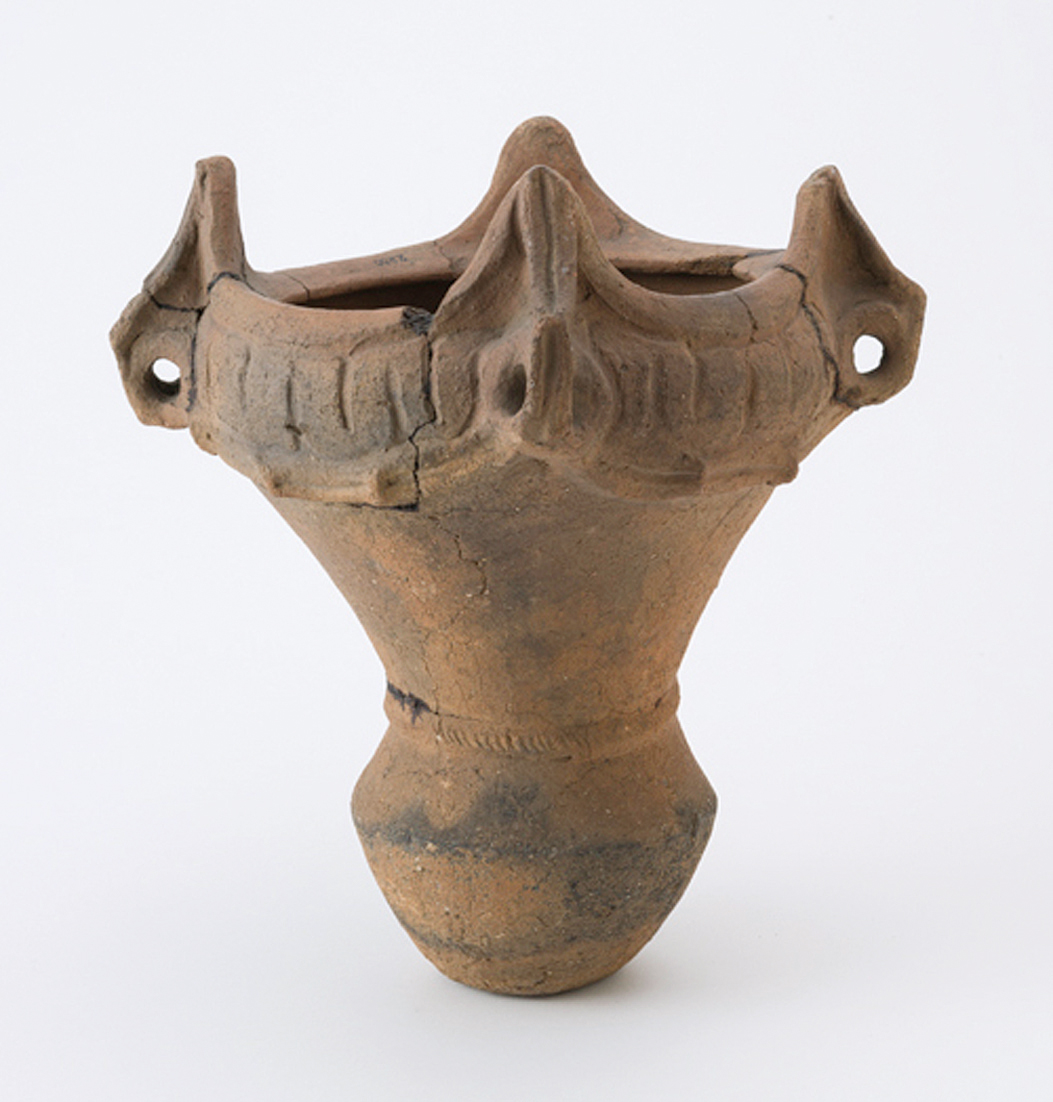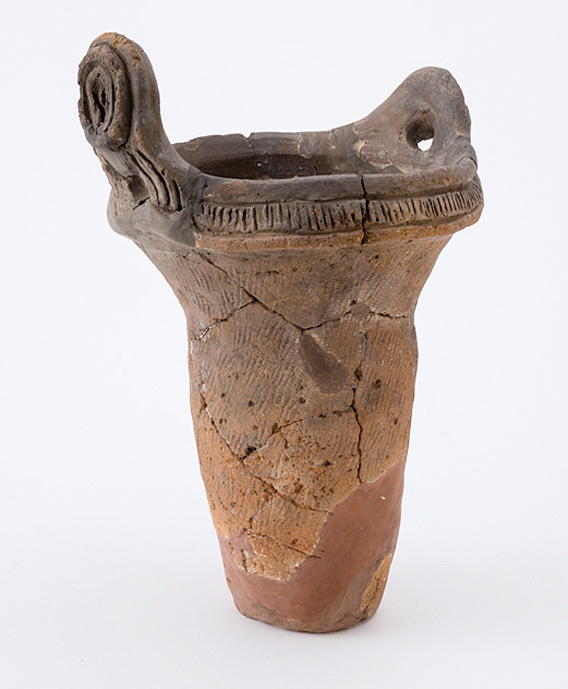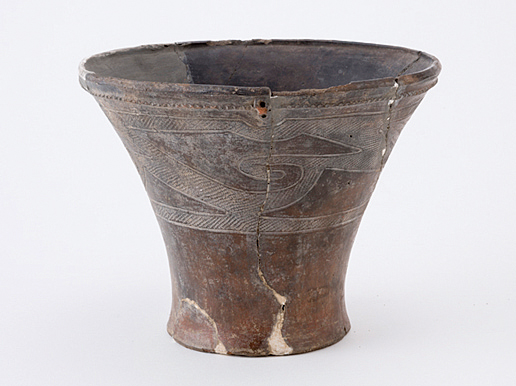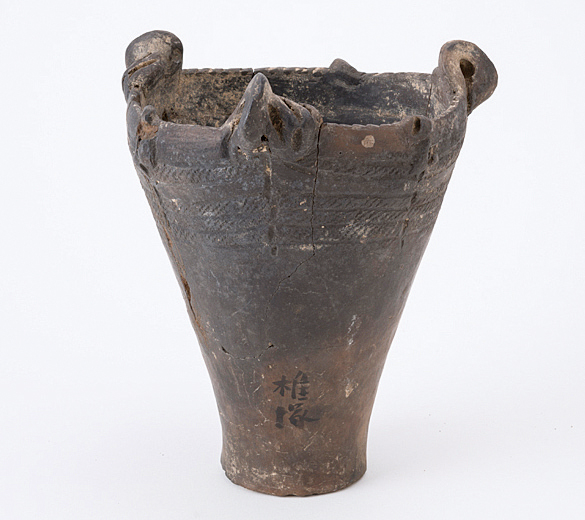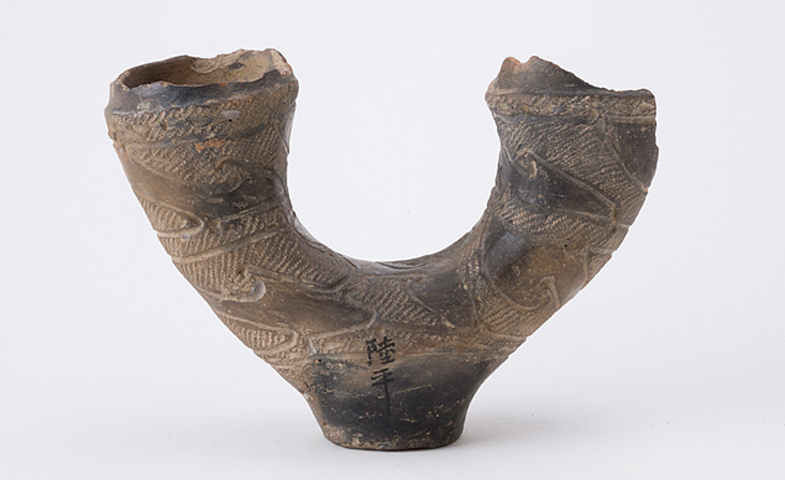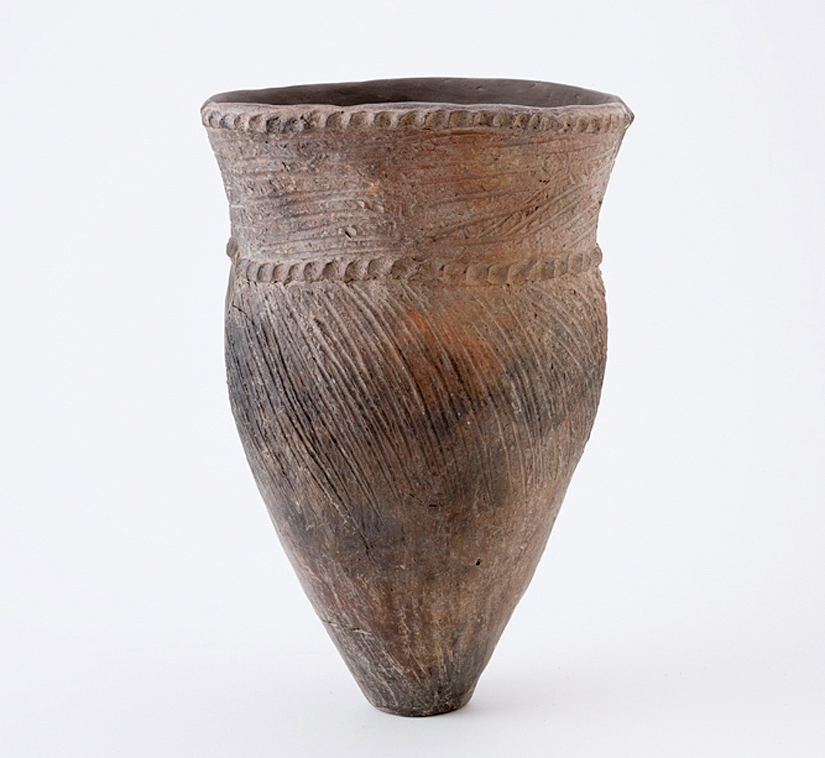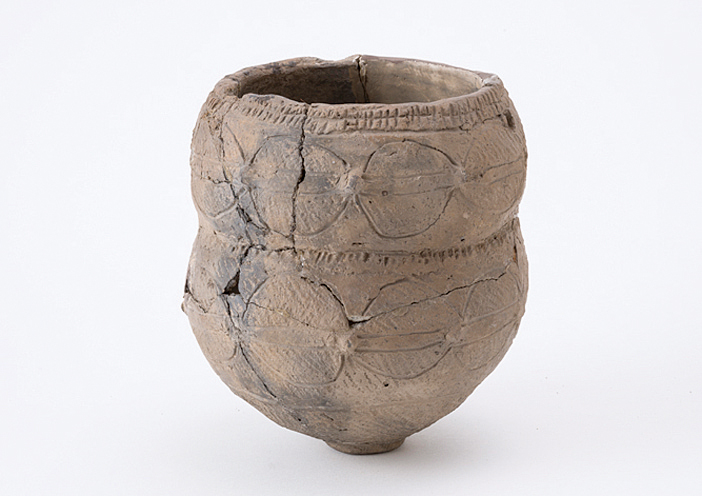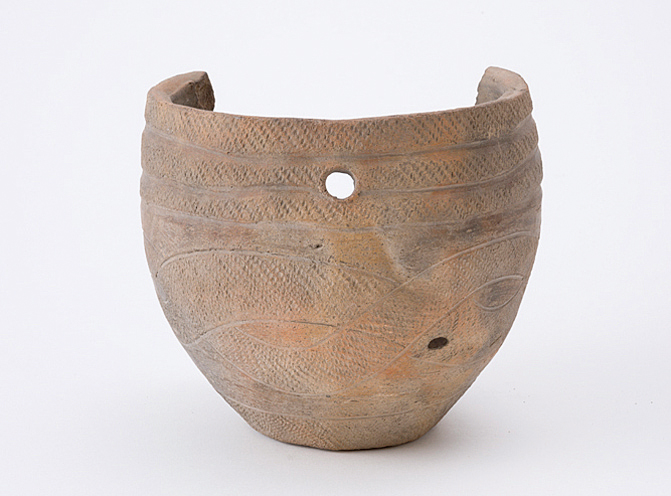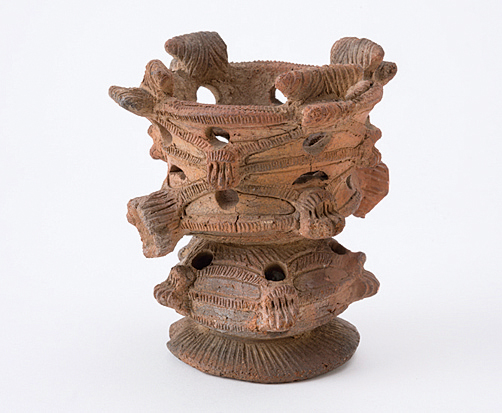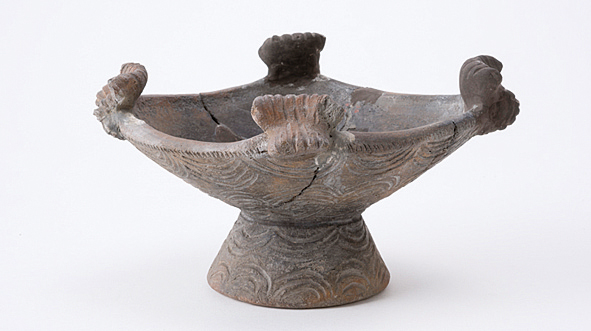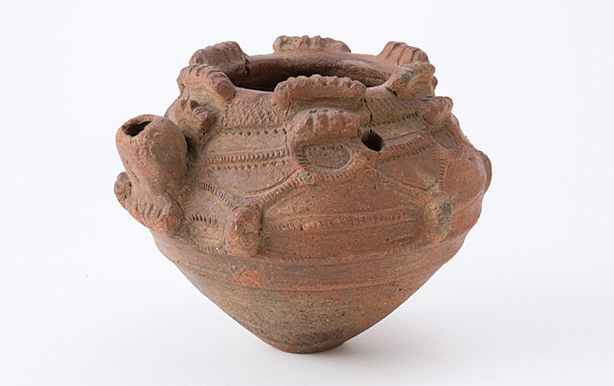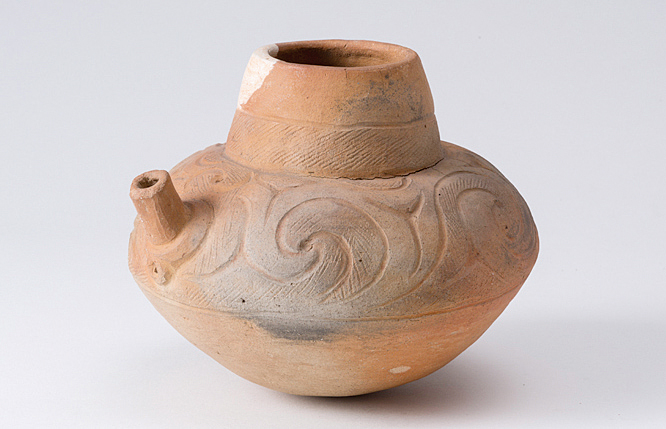F1
Jomon pottery of the Kanto Region
The ceramic vessel made during the Jomon period is called Jomon pottery. In 1877 Edward S. Morse, an American biologist, was offered a post as professor at the University of Tokyo. He excavated the Omori shell midden (Tokyo prefecture) and obtained numerous pottery sherds. Many of the sherds were decorated with a “cord-mark” design and were later named “Jomon (cord-mark) pottery.” Compared with Yayoi pottery, Jomon pottery presents a dynamic three-dimensional form typically seen at the rim with an appliqué.
The figures of birds and deer on the pottery and dotaku (bronze bell) from the Yayoi period were frequently represented with lines. However, in the Jomon period there were few examples of line-drawing. For instance, the wild boar terracotta clay figures of the Jomon period are three-dimensional. The animistic faith and the belief in the existence of forests spirits must have formed the source of Jomon people’s thought. It may have produced the fountain from which complicated patterns and artifacts were born.
In the Taisho period, paleontologist Hikoshichiro Matsumoto developed a typological analysis of Jomon pottery. He carefully excavated each sedimentary layer of the shell midden and examined the change of patterns on the pottery. At the beginning of the Showa period, Sugao Yamanouchi, who specializes in prehistoric archaeology, succeeded this method. He established the chronological system of dating Jomon pottery in Kanto and Tohoku regions. Many of the potteries on exhibition appear in “Nihon Senshi Doki Zufu (Illustrated Catalogue of Prehistoric Pottery),” the catalogue for standard types of Jomon Pottery compiled by Yamanouchi. The pottery of the Middle Jomon period is dignified and dynamic. After the Late Jomon period, thinner and more delicate pottery was common. The patterns were refined and special forms for ceremonial purposes like double-mouthed vessels and spouted vessels increased. These potteries reflect the complexity of society in the Late Jomon period. In the Tohoku region, Kamegaoka culture flourished during the Final Jomon period, and its elaborated patterns influenced the pottery of the Kanto region. (Hiromi Shitara)
References
山内清男(1967) 『日本先史土器図譜』先史考古学会(再版・合冊刊行)。

